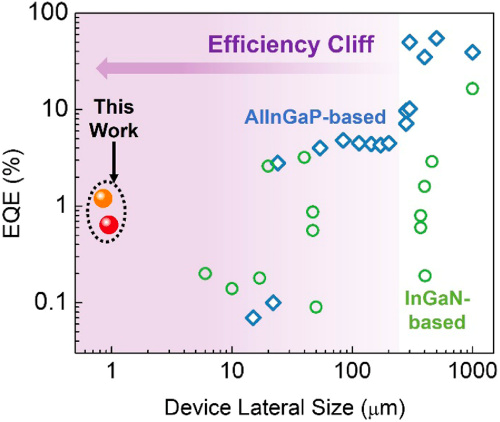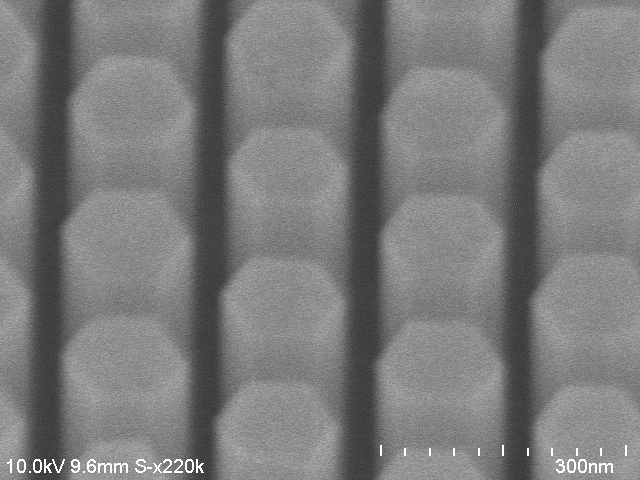Overcoming the efficiency cliff of red micro-LEDs for virtual/augmented reality

R: ECE doctoral student Yakshita Malhotra helped plan the parameters and then grow the nanowire crystals using the MBE system in Prof. Mi’s lab.
Red LEDs are currently used in applications where size and clarity is not an overriding concern, such as street lights and other types of outdoor lighting. The same LEDs, however, fall short when needed for close up work, such as augmented and virtual reality (VR) devices. With virtual reality putting displays within inches of the user’s eyes, researchers have been exploring how to make extremely small pixels. Nanowire LEDs are approximately 10,000 times smaller than standard phone display pixels, but until now, the red micro LEDs haven’t been efficient enough to be practical.
In newly published research, a team of researchers report an efficiency of over 1% for a submicron, unpackaged device, on par with blue and green LEDs of similar sizes. The researchers say that with proper packaging and further developments, the device efficiency will exceed that used in phone pixels – but with sizes two to three orders of magnitude smaller. These highly efficient, bright, and robust micro LEDs offer a promising future for not only crystal clear VR headsets, but for future on-chip integration with blue and green LEDs.
“As traditional red-emitting LEDs become smaller and smaller, their efficiency keeps dropping,” said Dr. Ayush Pandey, who helped create the new LEDs. In fact, says Pandey, there is a precipitous drop in external quantum efficiency as devices shrink to the size of 10-20μm, not to mention the 1μm devices demanded for VR/AR devices.

There are several reasons for this, including damage caused in the fabrication process of current red LEDs, as well as performance limits inherent in materials typically used. To overcome these weaknesses, the team, led by Prof. Zetian Mi, introduced specially-designed nanowires (with a width of about 1μm) to overcome fabrication-related problems, and introduced a material cocktail of indium gallium nitride to enable miniaturization of the devices, while preserving high efficiency.

The team’s newly-imagined red LEDs are nearly three orders of magnitude smaller in surface area than previously reported devices, while exhibiting an external quantum efficiency of ~1.2%, matching many conventional micro-LEDs of any color.
The ultimate goal would be to integrate red, blue, and green LEDs on a single chip, which would be feasible with the materials used in their work. Such integration is essential for large-scale integration of next-generation electronic and optoelectronic devices, say the researchers.
Details of the research are described in “N-polar InGaN/GaN nanowires: overcoming the efficiency cliff of red-emitting micro-LEDs,” by A. Pandey, Y. Malhotra, P. Wang, K. Sun, X. Liu, and Z. Mi, Photonics Research, April 2022.
Fabrication work was accomplished in the Lurie Nanofabrication Facility, and technical support was provided by the Michigan Center for Materials Characterization.
Some intellectual property related to GaN-based nanowires was licensed to NS Nanotech Inc., which was co-founded by Z. Mi. The University of Michigan and Mi have a financial interest in NS Nanotech, Inc.
 MENU
MENU 
